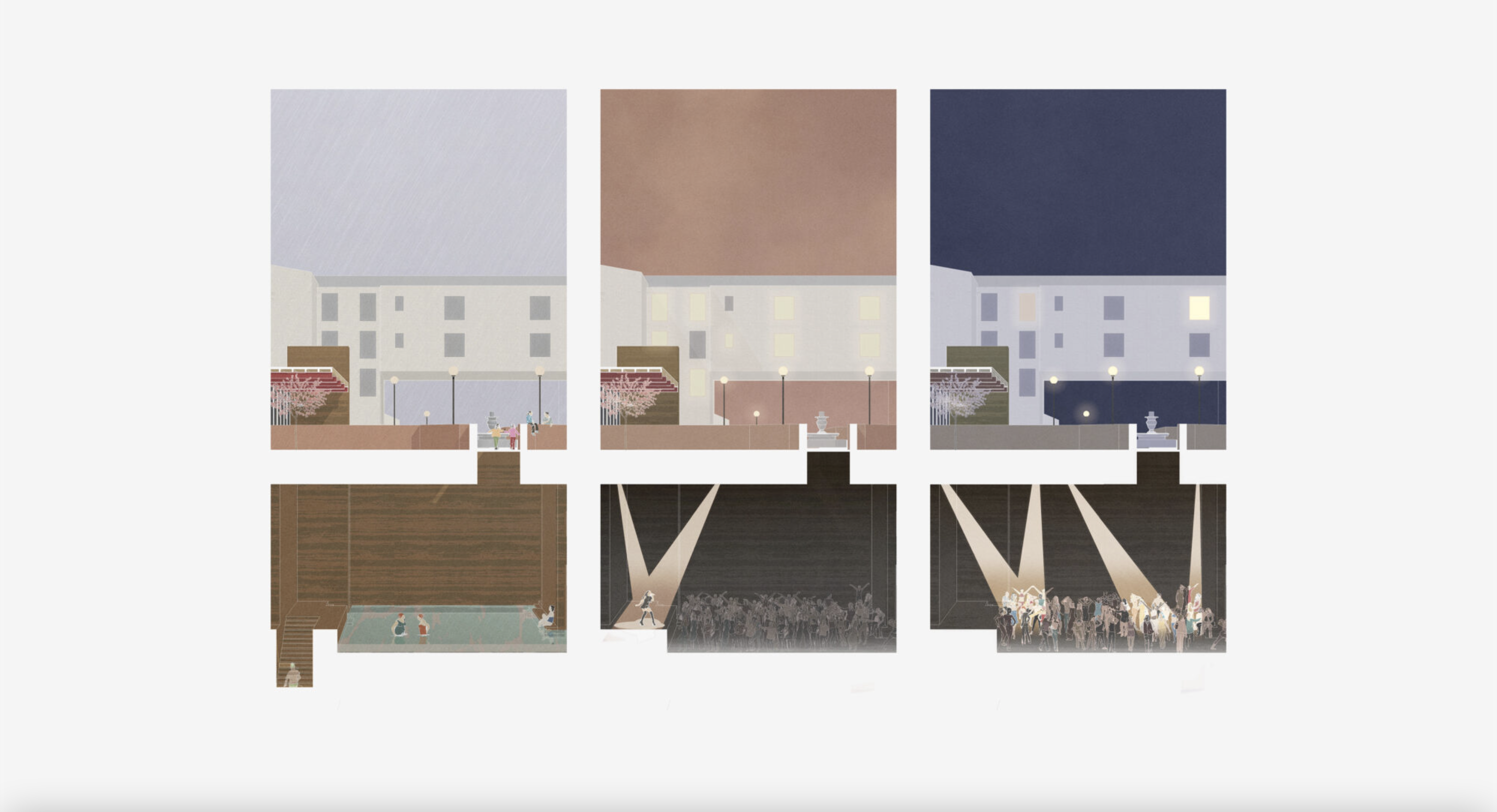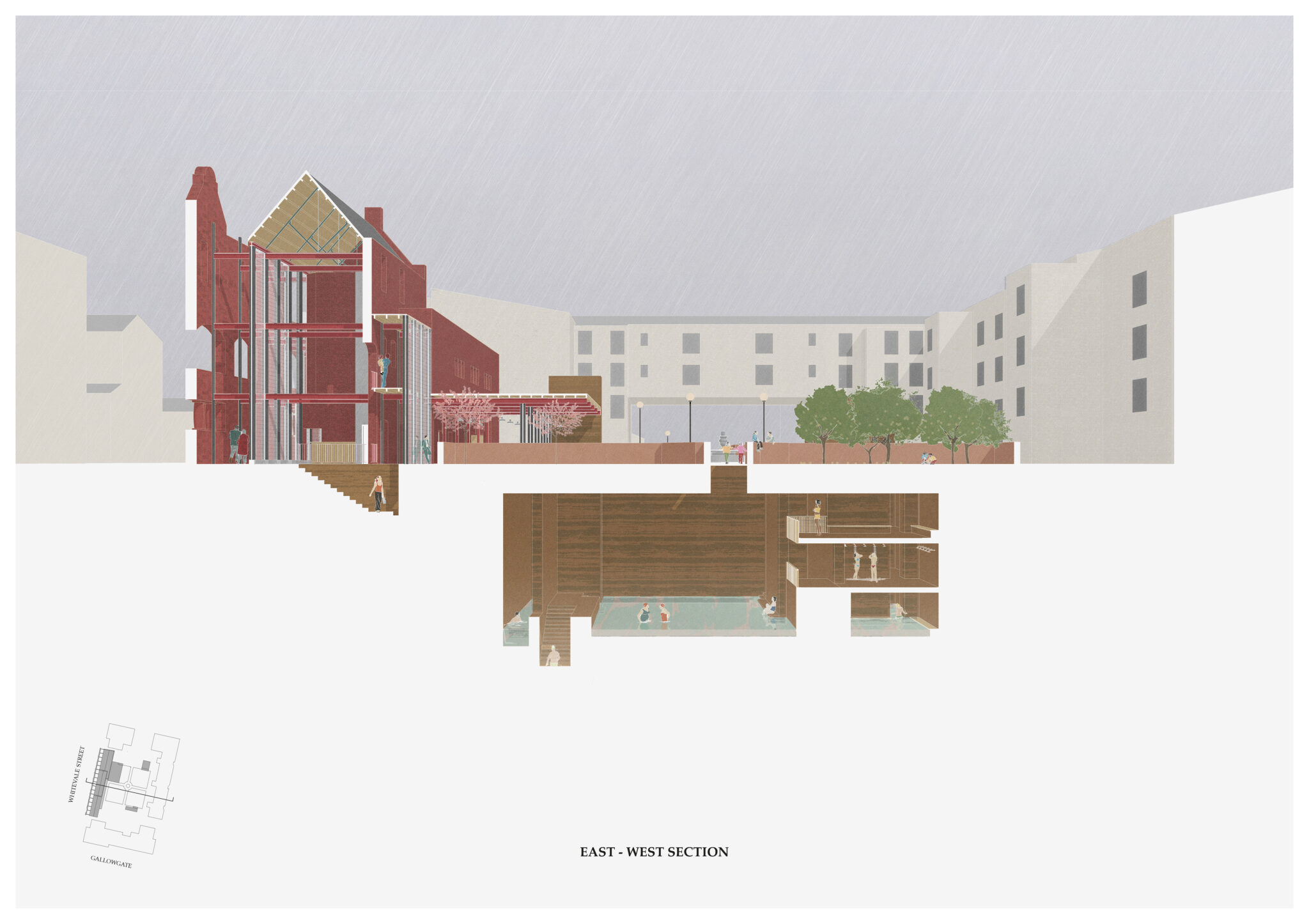It has been proposed that Glasgow is a proto-knowledge city, reliant on its emergent knowledge economy. Vacant buildings, often former institutional buildings, can be found in areas of the city removed from the so-called knowledge economy, and are often relics from the city’s previous industrial economy. It is perhaps easy, therefore, to see these white elephants as obsolete: in place but out of time. But what are the factors that determine a building’s value, and who is it determined by? What are the material conditions that created these elephants, and what are the economic, social and political landscapes that informed these conditions? What roles did these buildings formerly serve in their communities, both explicitly and implicitly, and is their loss representative of something more than the loss of a piece of architecture?
With these questions in mind, how might a vacant, formerly-public building in an area of the city cut off from the new economy be repurposed to once again serve its local community, a community that has for decades had to tolerate its effective absence?



